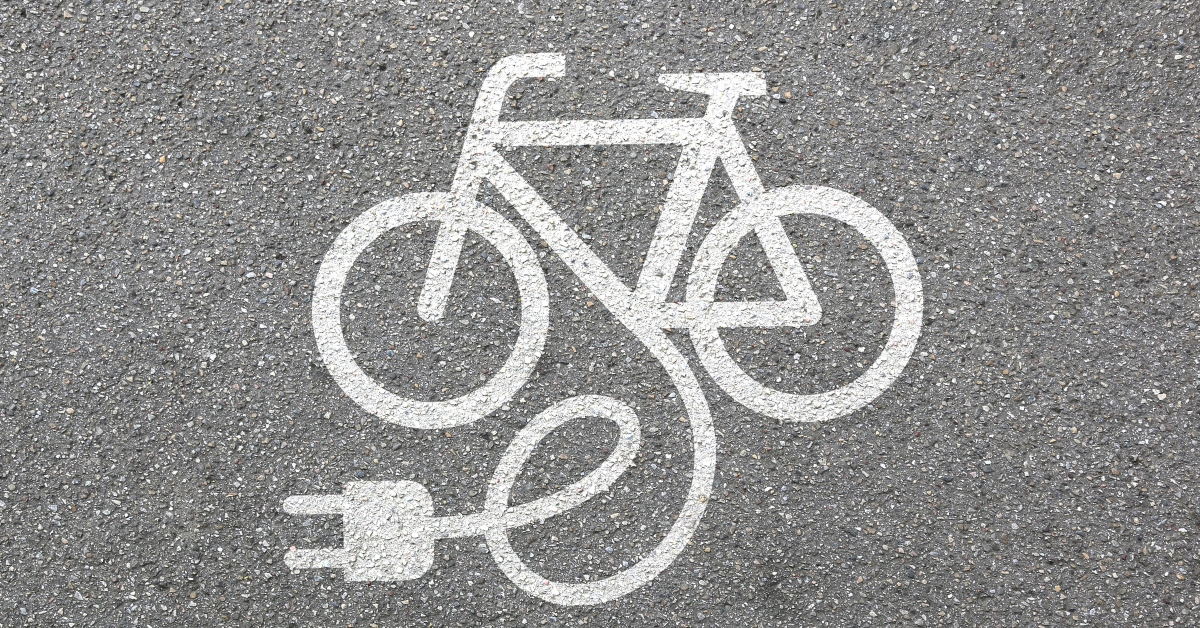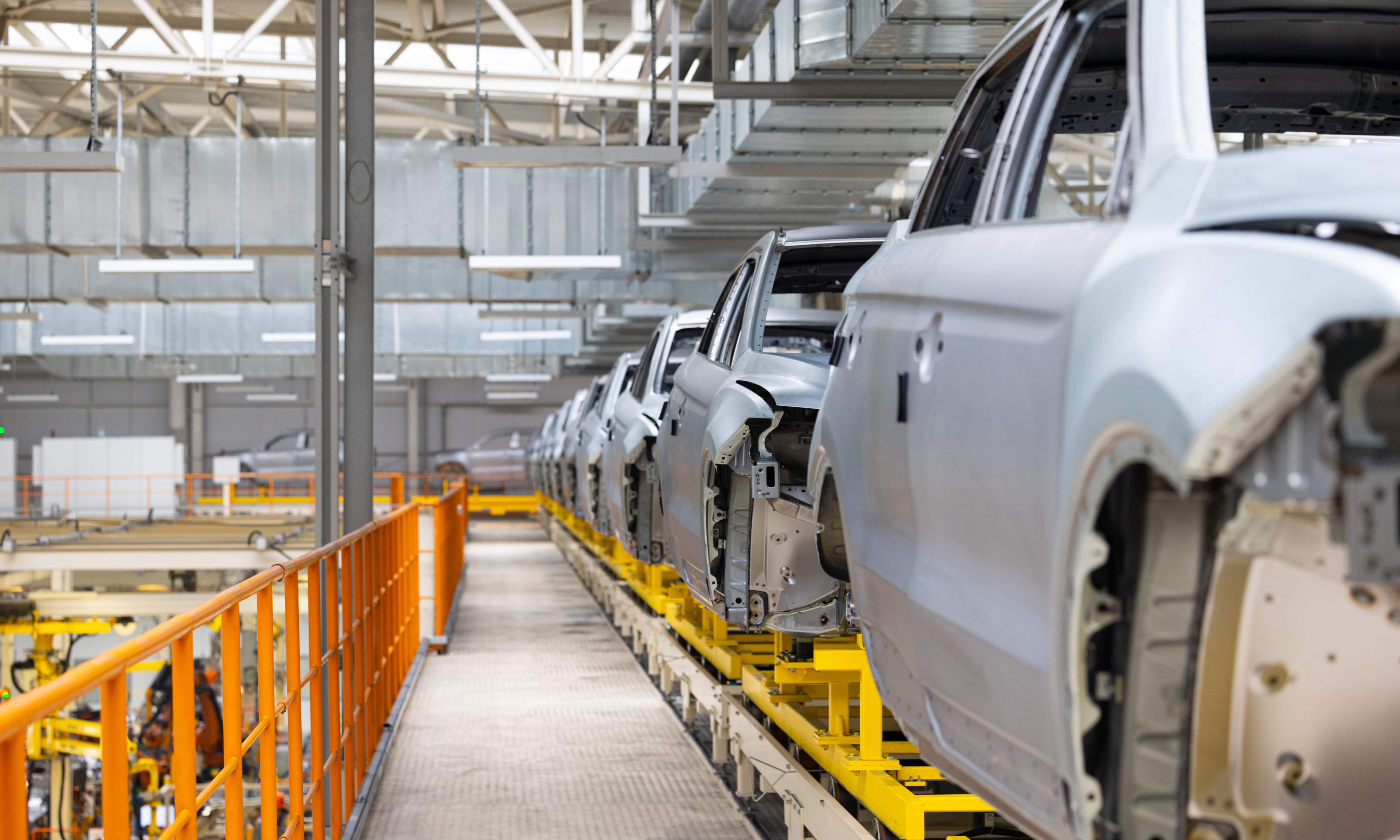Imagine a transportation option that has the fun and flexibility of a bike, is a fraction of the price of a car, can park almost anywhere for free, and produces almost zero climate-changing emissions. Sounds too good to be true, right? Think again. Meet the e-bike.
A battery and small electric-assist motor on a bike frame allows riders to climb hills and reach higher speeds with each boosted pedal for less effort than a regular bike. E-bikes can reach speeds of up to 28 mph and can go 20 -100 miles on a single charge. The US Department of Energy confirms that around 50% of all car trips in the US are less than three miles. In many locations and situations, e-bikes can replace a significant number of trips that are usually made in cars. RMI estimates if the top 10 most populous cities shifted just a quarter of their short vehicle trips to e-bikes, they would save over 1.8 million metric tons of CO2 equivalent (CO2e) in one year — equivalent to avoiding the use of 208.5 million gallons of gasoline or 4.2 million barrels of oil.
Not only do e-bikes make sense from an environmental perspective, they are an excellent transportation option financially. The cost of an e-bike ranges from $500 to thousands of dollars, with the average price around $2,500, according to the National Conference of State Legislatures. That may seem expensive for a recreational bike, but replacing your car, a second car in your household, or using an e-bike for a daily commute can save you thousands on fuel, auto insurance, registration, maintenance, and parking.
E-bikes sales are growing exponentially and cities and states are responding. As the e-bike market rises in popularity within the U.S., several jurisdictions have unveiled different incentives to make e-bikes more affordable. For example, California’s E-Bike Incentive Project offers vouchers for low-income households to use towards the purchase of an e-bike. Voucher amounts increase for the purchase of cargo or adaptive e-bikes.
Another two-wheeled option for a different type of travel: zero-emission motorcycles. Just like traditional four-wheeled electric vehicles, electric motorcycles are quieter, smoother and more comfortable. Electric motorcycles of today offer riders the choice to ride electric in style. Another plus: no tailpipe pollution. While traditional gas motorcycles use less gasoline and thus have lower emissions than passenger cars, motorcycle exhaust is higher in smog-forming pollutants and poisonous carbon monoxide, meaning that electric motorcycles (and EVs in general) are a great option to significantly improve air quality.
While e-bikes are great for getting around town for shorter trips, electric motorcycles offer greater speed and distance capabilities, which make them a great choice for longer journeys or commutes. Many electric motorcycles have ranges between 90-185 miles on a single charge and can achieve speeds of up to 120mph.
What’s more is that electric motorcycles, like other EVs, require far less maintenance than their gas counterparts. With fewer moving parts, electric motorcycles can save riders significant time and money. Though upfront costs for an electric motorcycle are higher than for a gas motorcycle, the market is trending towards price parity as material costs fall and technology is improved. Some states are making real efforts to support the growing zero-emission motorcycle market. Currently, a proposal in California would create a substantial incentive for consumers to apply to the purchase of an electric motorcycle and reduce their out-of-pocket costs. So, if you’re in the market for a fun new ride, an electric motorcycle or an e-bike are best-in-class options.
For those of you who have yards and gardens, electric landscaping equipment is making inroads into neighborhoods nationwide.
Quick Quiz: Which creates more smog-forming pollution in California each summer?
- All of the passenger cars in the State.
- All of the small off-road engines (lawnmowers, leaf blowers, etc.) in the State.
- None of the above – what a ridiculous question!
If you guessed “B,” you are correct. Small off-road engines such as lawnmowers, leaf-blowers, pressure washers, string trimmers, and generators create more smog-forming emissions each day during the summer than all of the passenger cars in the state.
Unlike cars in the U.S., lawn equipment is not subject to federal regulation like greenhouse gas emissions standards and Corporate Average Fuel Economy, or CAFE, standards. Over time, cars and light-duty trucks have become cleaner and more efficient (Thanks EPA and NHTSA!), but your grandparents’ trusty push mower isn’t much different than one you would buy today. Lawncare in 2019 used almost 3 billion gallons of gasoline, with an estimated 17 million gallons spilled during the refueling process.
To address pollution from landscape equipment, the California Air Resources Board has approved a measure to phase out gasoline-powered lawn equipment by requiring most new lawn equipment to be zero-emission beginning in 2024. Similar to EVs, electric lawn equipment reduces emissions, saves on fuel costs, and requires less maintenance. Plus, the same 45W tax credit that consumers are using to get up to $7,500 off leasing an EV is available for the purchase of commercial-grade electric lawnmowers.
Residential electric lawn equipment is also supported through state and utility incentives. Colorado and California incentivize electric lawn equipment while electric utilities in many states offer incentives and bill credits for commercial and residential electric lawn care equipment. With a transition to nearly silent electric lawnmowers and leaf blowers, there is a lot to smile about.
Across the country, people living in the suburbs may finally be able to sleep in on summer weekends.


